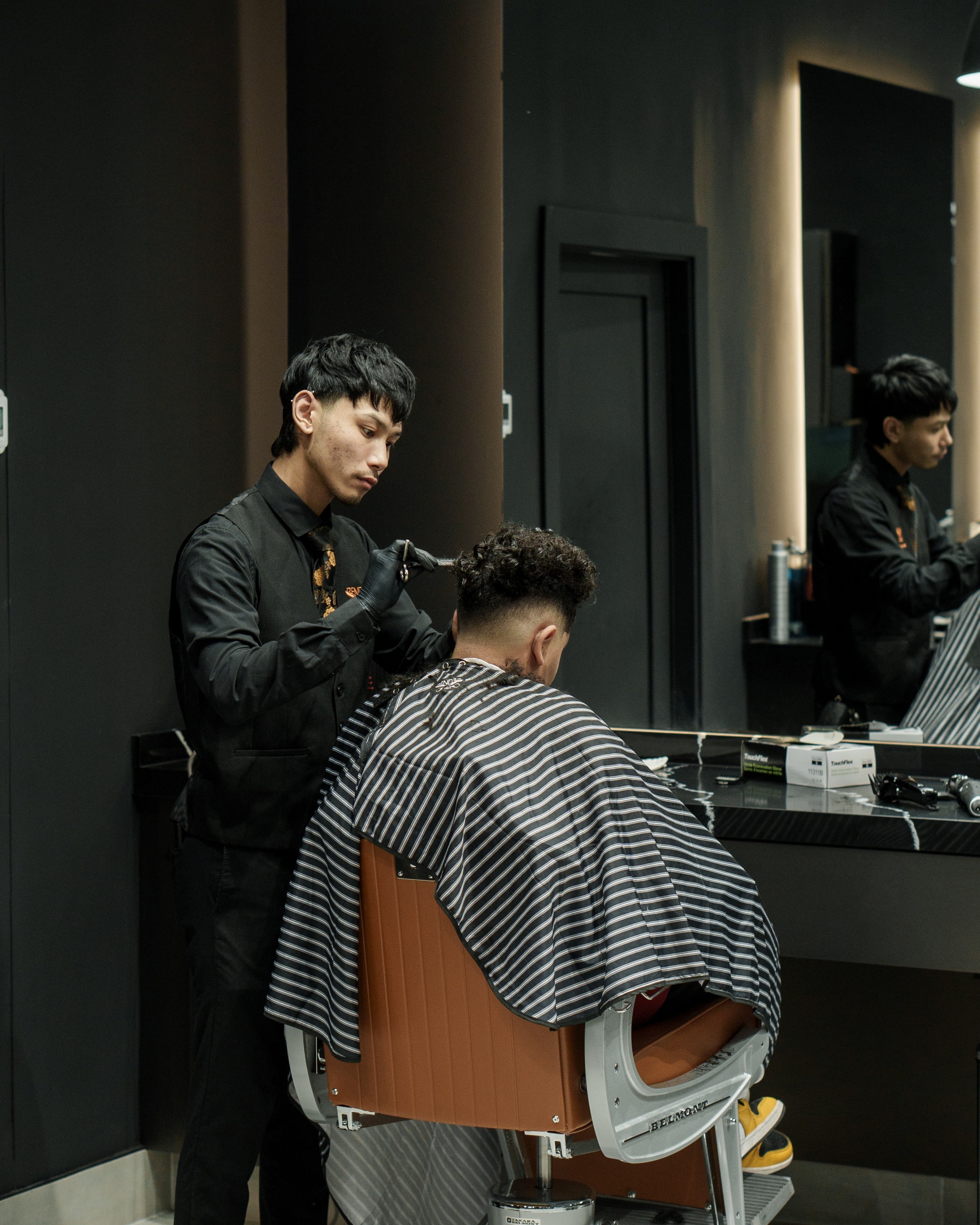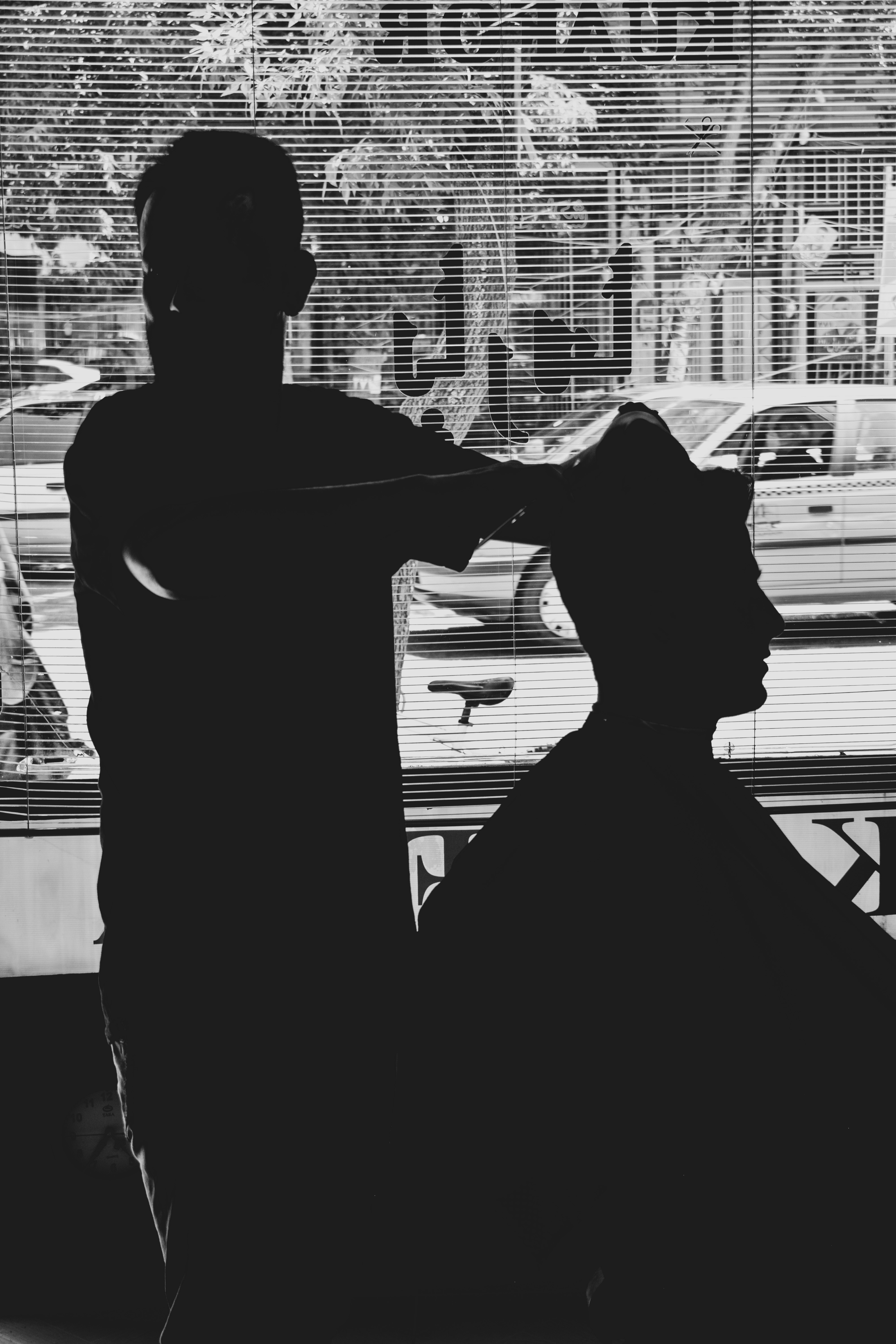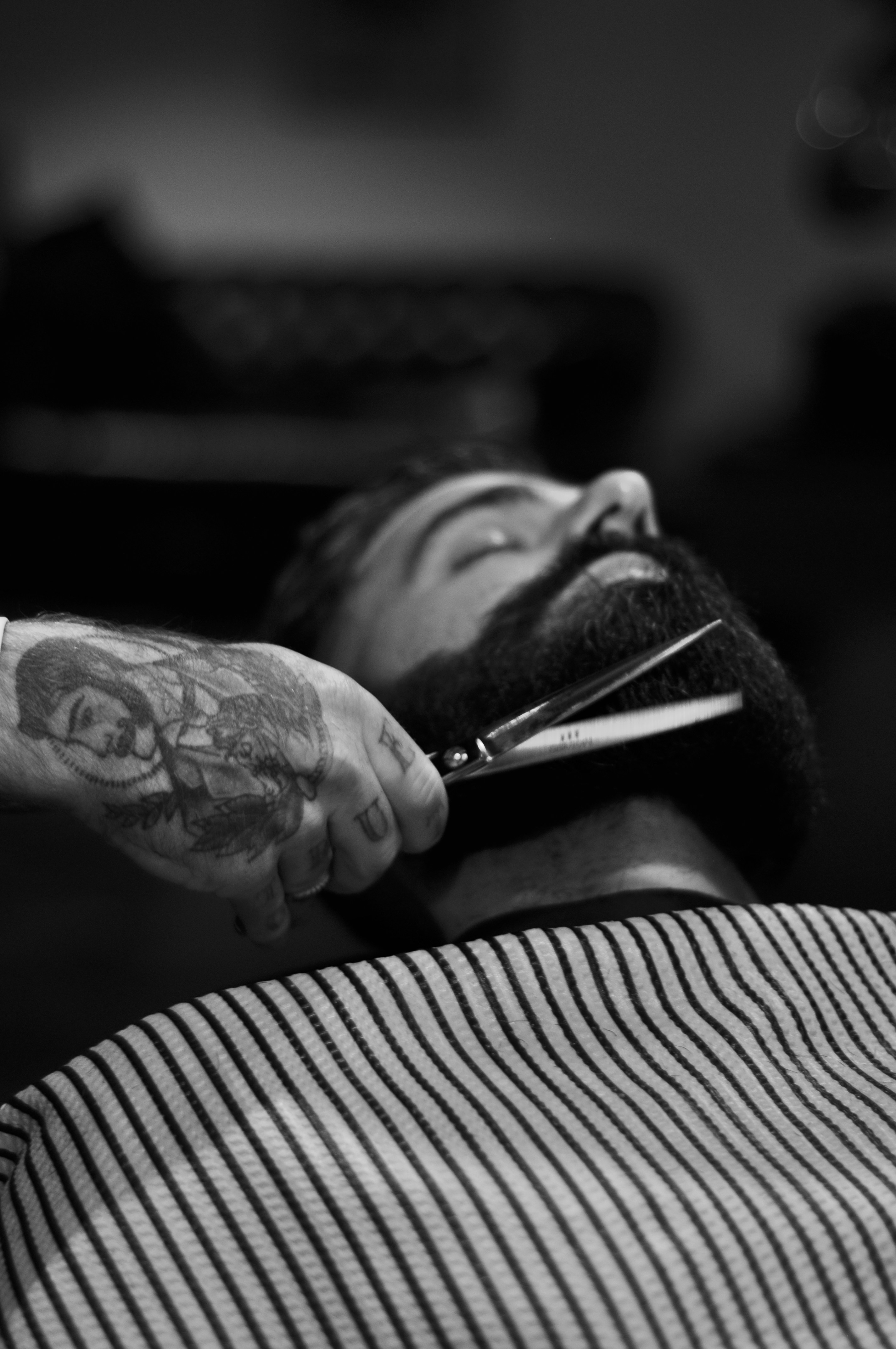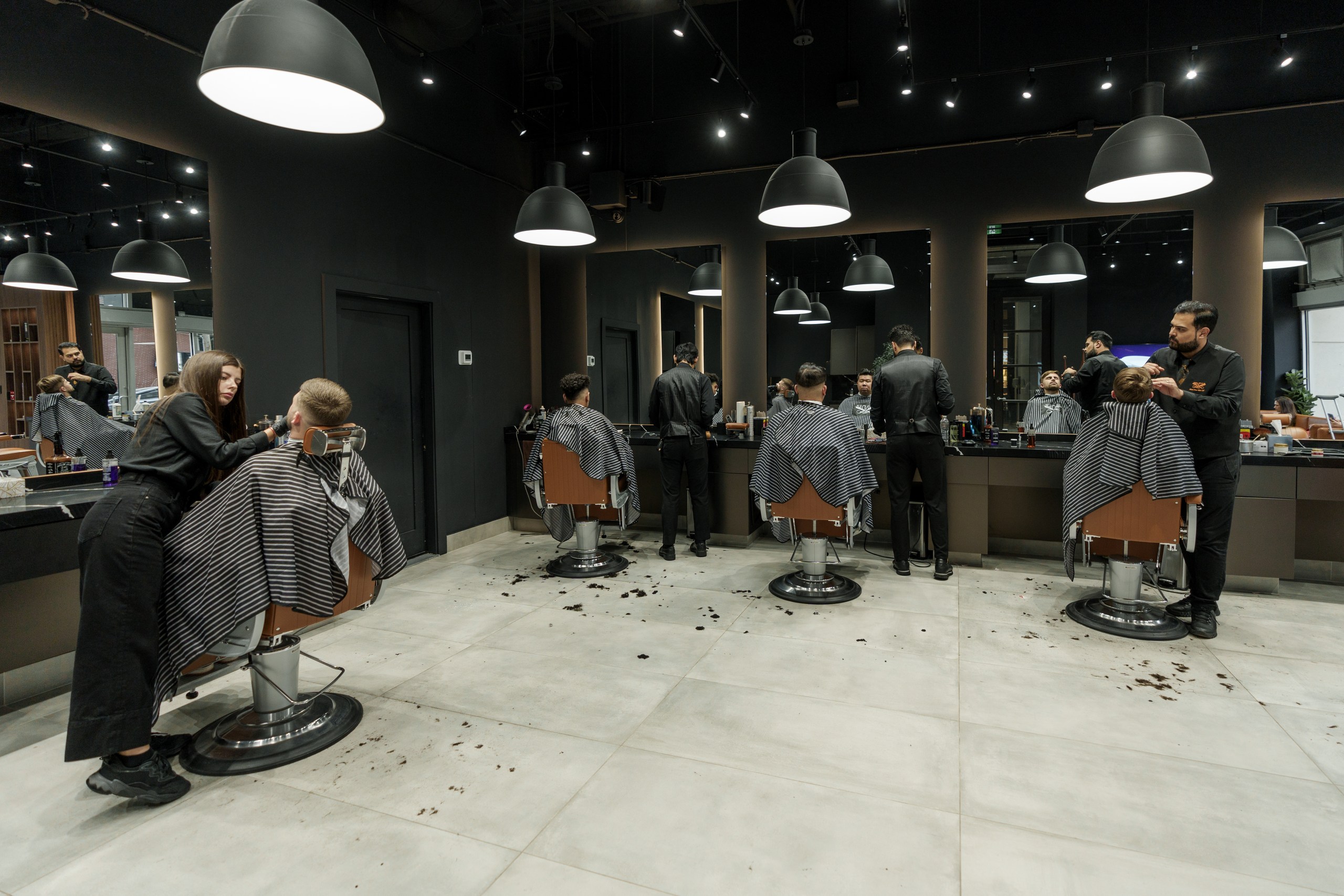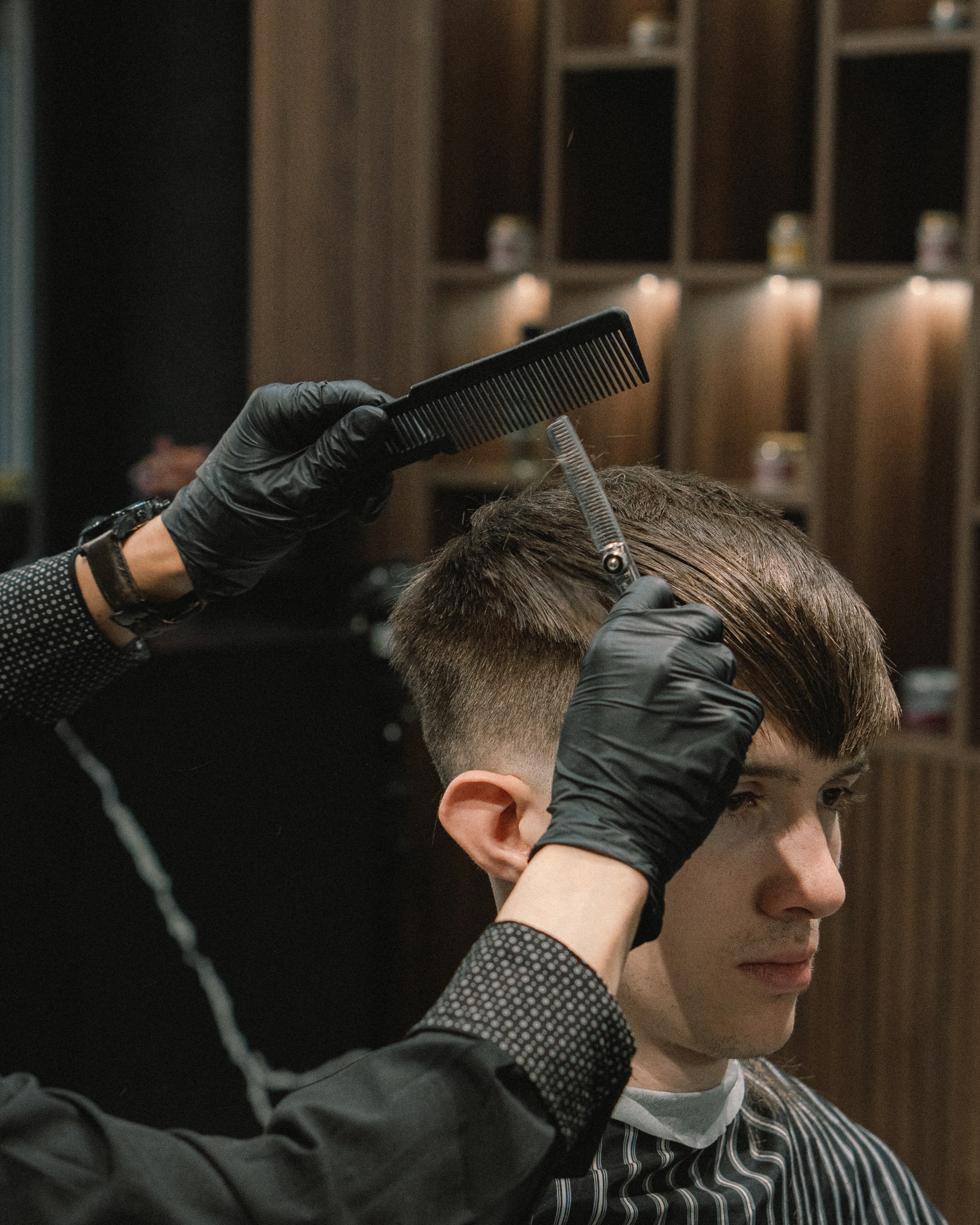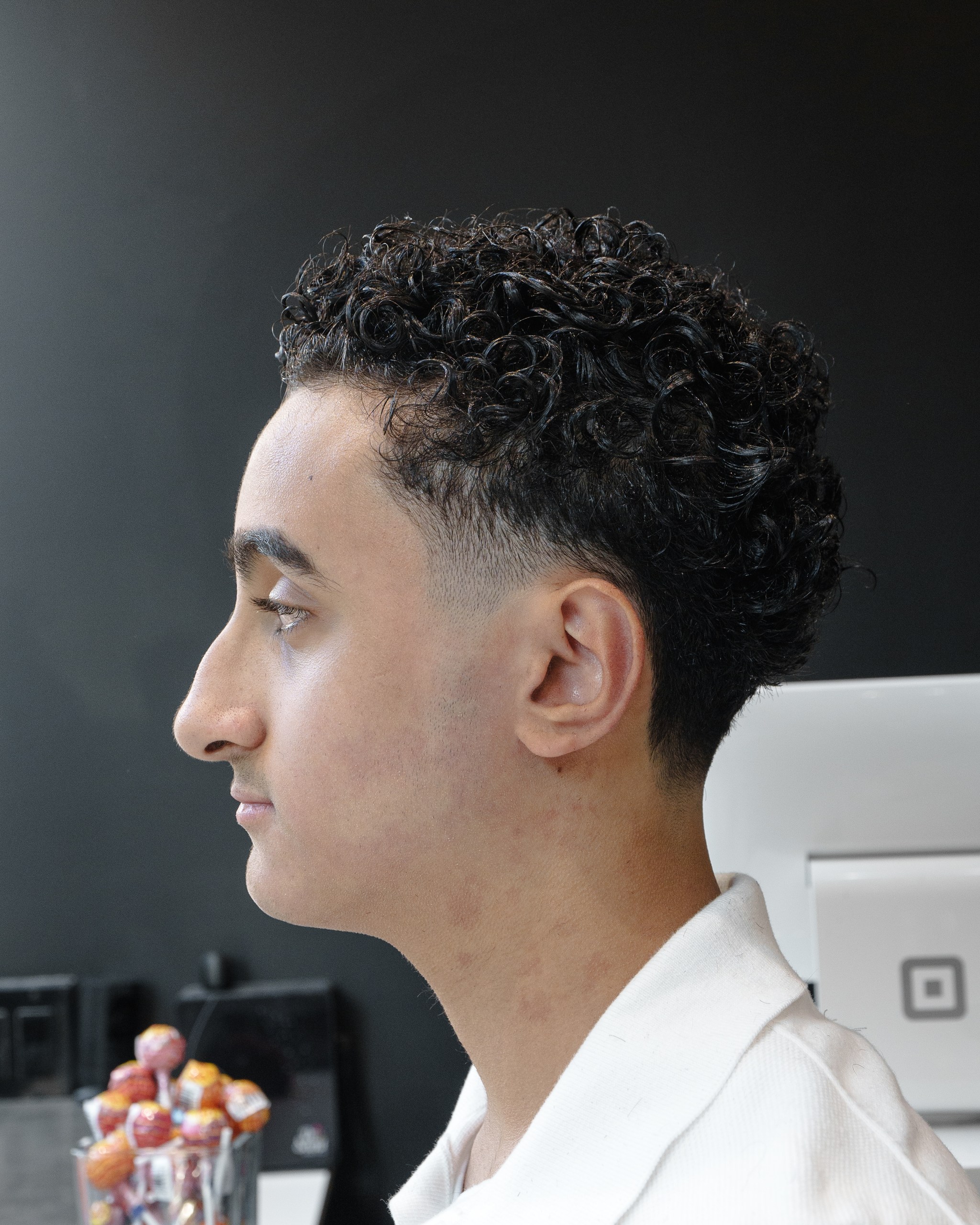Open your bathroom cabinet right now and count how many hair products you see. Now, honestly tell me when you bought each one. Can't remember? That's already a red flag.
Most guys treat hair products like they're non-perishable items that last forever. That tin of pomade from 2019? Still using it. That gel that's changed color and consistency? "It still works, right?" Wrong.
At Rendezvous Barbers, we constantly see guys frustrated with their styling results, blaming their technique or their hair type, when the real culprit is sitting right there in their medicine cabinet – expired, degraded, or contaminated products that are actively working against them.
Here's what most guys don't realize: hair products don't just "go bad" overnight with obvious signs like mold or terrible smells. They degrade gradually, losing effectiveness and sometimes developing properties that actually damage your hair or irritate your scalp.
The Expiration Reality Check
Unlike food, most hair products don't come with clear expiration dates stamped on the front. Instead, they use cryptic symbols and codes that most guys ignore completely. That little jar symbol with "12M" inside? It means the product is good for 12 months after opening. The problem is, most guys don't track when they first opened anything.
But here's where it gets tricky – the "12M" assumes you're storing the product correctly, using it regularly, and not contaminating it with dirty fingers or tools. In reality, most bathroom storage violates every condition for optimal product longevity.
Your steamy bathroom with temperature swings from hot showers creates the perfect environment for accelerated product degradation. That pomade sitting next to your shower? It's experiencing daily heat and humidity cycles that break down its chemical structure faster than the manufacturer ever intended.
The ingredients in hair products aren't just sitting there passively. They're actively interacting with each other, with air, with bacteria, and with environmental factors. Over time, these interactions change the product's performance characteristics in ways that aren't immediately obvious.
Why Expired Products Actually Make Your Hair Worse
Using degraded hair products isn't just ineffective – it can actively damage your hair and scalp. When preservatives break down, bacteria and mold can grow in the product, even if you can't see or smell them. Applying contaminated products to your scalp can cause irritation, breakouts, or even infections.
Oil-based products like pomades can go rancid, developing compounds that are harsh on hair and skin. Rancid oils don't just smell bad – they can strip your hair's natural moisture and cause breakage. The same pomade that once made your hair look smooth and healthy might now be making it dry and brittle.
Water-based products face different degradation challenges. Their preservative systems can fail, allowing bacterial growth that changes the product's pH balance. When you apply products with altered pH to your hair, you can damage the hair cuticle and cause frizz, dullness, or breakage.
Some degraded products separate into their component parts, concentrating certain ingredients while diluting others. This creates unpredictable results – sometimes too much hold, sometimes none at all, sometimes irritation where there never was before.
The Contamination Factor
Even products that haven't technically "expired" can become contaminated through poor handling and storage. Every time you stick your fingers into a jar of pomade, you're introducing bacteria from your hands. If those fingers aren't completely clean, you're basically inoculating your product with whatever you've touched.
Double-dipping is another major contamination source. Using the same fingers that just styled your hair to get more product transfers oils, dead skin cells, and potentially harmful bacteria back into the container. Over time, this builds up and can overwhelm the product's preservative system.
Water contamination is particularly problematic for oil-based products. If you get water into your pomade or wax – from wet hands or steam from the shower – you're creating conditions for mold and bacterial growth that the product wasn't designed to handle.
Cross-contamination between products also causes problems. Using the same comb or brush with multiple products can transfer incompatible ingredients that cause reactions or degradation. That's why professional barbers sanitize tools between clients and products.
Storage Mistakes That Kill Products Early
Most guys unknowingly create conditions that dramatically shorten their products' lifespan. Storing products in the bathroom exposes them to temperature fluctuations, humidity, and steam that break down chemical bonds and encourage bacterial growth.
Direct sunlight is another product killer. That pomade sitting on your windowsill might look convenient, but UV rays break down many hair product ingredients, changing their color, consistency, and effectiveness. Heat from radiators or heating vents creates similar problems.
Leaving lids loose or containers open allows air exposure that oxidizes ingredients and allows contamination. Even briefly leaving a jar open while you style your hair introduces air and potential contaminants that accumulate over time.
Temperature extremes – like leaving products in a hot car or cold garage – can cause permanent changes to product structure. Waxes and pomades can separate or crystallize in ways that make them impossible to use properly, even after returning to normal temperatures.
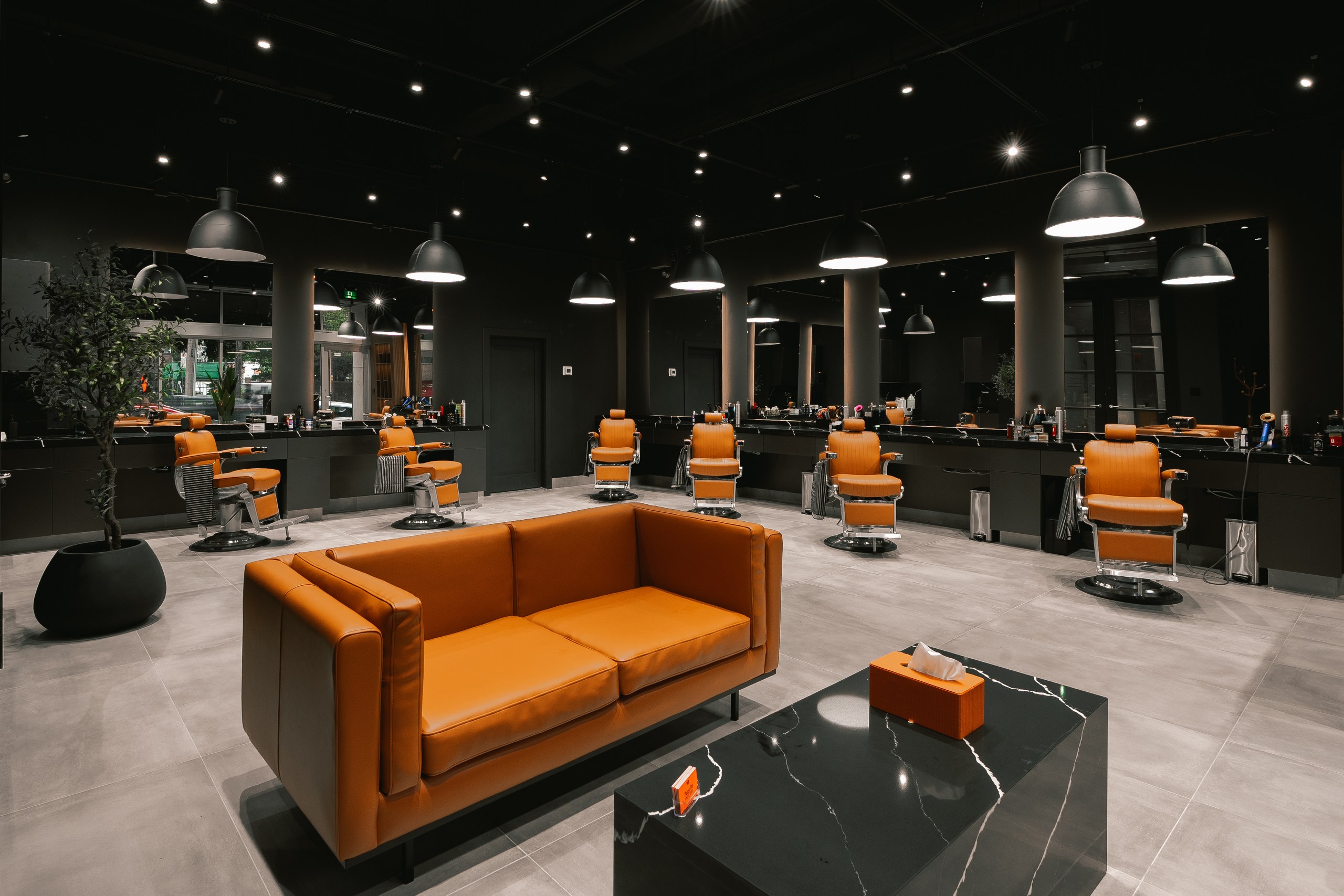
Product-Specific Expiration Signs
Different types of hair products show different warning signs when they're past their prime:
Oil-based pomades and waxes develop rancid odors, change color (often becoming darker), or separate into layers. The texture might become grainy or impossible to emulsify properly. If your pomade smells different than when you bought it, it's probably degraded.
Water-based gels and creams can develop off odors, change consistency (becoming thicker or thinner), or show visible separation. Mold growth appears as fuzzy spots, usually near the container edges where air exposure is highest.
Spray products lose pressure, change spray patterns, or develop clogs in the nozzle. The product coming out might smell different or feel different on your hair than when new.
Leave-in treatments can become cloudy, develop sediment, or change color. Since these products often contain proteins or other sensitive ingredients, they're particularly prone to degradation.
The False Economy of Hoarding Products
Many guys hold onto old products because they were expensive or "still have some left." This false economy actually costs more in the long run. Using degraded products can damage your hair, requiring expensive treatments to repair. Poor styling results from old products might lead you to buy additional products trying to fix problems that the expired products are causing.
Expired products also waste your time. If your pomade isn't working like it used to, you'll spend extra time trying to achieve the same results, often using more product and getting frustrated with inconsistent performance.
The psychological cost matters too. When your hair doesn't look good because of poor products, it affects your confidence and professional appearance. The few dollars saved by using old products isn't worth looking unprofessional or feeling bad about your appearance.
Smart Product Rotation and Usage
Instead of buying multiple products and using them sporadically, focus on using one product consistently until it's finished, then moving to the next. This rotation system ensures you're always using fresh products while preventing waste from products expiring before use.
Buy appropriate sizes for your usage patterns. That giant jar of pomade might seem like a better value, but if it takes you three years to use it, you're actually getting worse value than buying smaller containers more frequently.
Track your opening dates. Write the month and year you first open a product somewhere on the container. This simple step helps you make informed decisions about when to replace products.
Share or trade products you won't finish. If you bought something that doesn't work for your hair type, pass it along to someone who will use it while it's still fresh rather than letting it sit and expire.
Toronto's Climate Challenges
Toronto's seasonal climate creates specific challenges for product storage and longevity. Our humid summers accelerate bacterial growth and can cause products to separate or change consistency. The moisture in the air can also get into containers, especially during steamy shower sessions.
Winter indoor heating creates very dry conditions that can cause products to dry out, concentrate, or change texture. The constant temperature fluctuations as you move between heated indoor spaces and cold outdoor air can also stress product stability.
The solution is choosing storage locations that minimize these environmental stresses. Interior closets often provide more stable conditions than bathrooms. Cool, dry, dark locations extend product life significantly compared to typical bathroom storage.
Professional Product vs. Consumer Product Longevity
Professional-grade products often have different formulations and preservative systems than consumer products. They're typically designed for high-turnover use in busy salons rather than sitting around for months in home bathrooms.
This doesn't necessarily mean they last longer – sometimes professional products have shorter recommended lifespans because they're formulated without certain preservatives. Understanding the intended usage pattern helps you make better decisions about product purchases and storage.
Some professional lines offer smaller sizes specifically for consumers who don't use products as quickly as salon professionals. These smaller containers might cost more per ounce but provide better value if you can't finish larger sizes before they expire.
When to Definitely Throw Products Out
Certain signs indicate immediate disposal, regardless of the product's age:
- Any visible mold or unusual growth – This is non-negotiable health risk
- Strong chemical or rancid odors – Indicates breakdown of ingredients
- Dramatic color changes – Usually indicates oxidation or contamination
- Separation that won't re-mix – The product structure has failed
- Skin irritation that develops from previously tolerated products
- Consistency changes that make the product impossible to use properly
Building a Sustainable Product Routine
The goal isn't to become paranoid about product expiration, but to develop sustainable habits that ensure you're always using effective, safe products. This means buying appropriately, storing correctly, and replacing products before they become problematic.
Consider seasonal product rotation. Maybe you use different products in summer and winter anyway – plan purchases around these patterns to ensure freshness when you need specific products most.
Build relationships with professionals who can guide your product choices. A barber who understands your hair type and styling goals can help you choose products you'll actually use up before they expire.
The Bottom Line
Fresh products perform better, last longer, and give more predictable results than expired ones. The small investment in replacing products regularly pays off in better hair, easier styling, and more confidence in your appearance.
Most importantly, using fresh products helps you accurately assess what works for your hair. If your pomade isn't performing well, you want to know it's because of product-hair compatibility, not because the product has degraded beyond effectiveness.
Conclusion
Tired of wondering why your expensive products aren't delivering the results they used to? Stop gambling with expired styling products and start fresh.
Book your appointment today and learn which products are worth the investment and how to keep them performing at their best. For honest advice about what to keep, what to toss, and what to buy next, visit one of our five locations in Toronto. We help you stop wasting money on products that aren't working.


